Hits: 8
The Fujifilm GFX 100S is the fourth model in the GFX series, inheriting the 102 MP sensor from the GFX 100. However, it one-ups its predecessor by coming in a much smaller. DSLR-style body that boasts better image stabilisation – and it comes with a smaller price tag than the previous model.
When we reviewed the Fujifilm GFX 100 back in 2019 we called it „impressive“, and the same is true of the GFX 100S, but for very different reasons. It takes medium-format photography out of the studio and more into the mainstream.
Going mainstream also means making this camera somewhat more affordable. At almost half the price of the GFX 100, the GFX 100S manages to undercut some pro-level full-frame mirrorless cameras. Compromises have had to be made to achieve this price point, but in no way do any of those hamper the performance of the camera. In fact, in some respects, the GFX 100S is actually better than its predecessor.
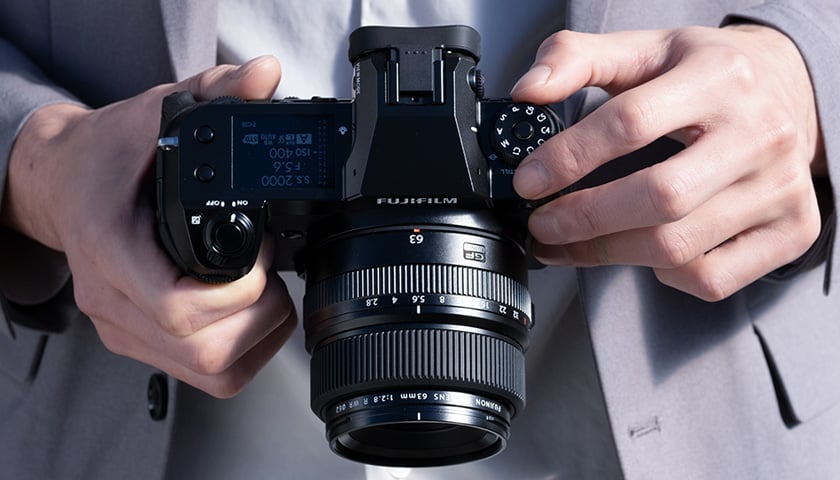
Fujifilm GFX 100S Key features
The GFX 100S is smaller than the GFX 50S, with a more DSLR- like styling rather than the rangefinder design of the GFX 50R. Despite this downsizing. Fujifilm has managed to retain in-body image stabilisation by reducing the size of the IBIS housing by 20% compared to the one in the GFX 100 (and making it 10% lighter too), as the company has done for smaller X-series cameras like the X-T4 and X-S10.
In the process of miniaturising the IBIS mechanism. Fujifilm has managed to make it more effective as well – it‘s rated at six stops of compensation for camera shake compared with the 5.5 stops of correction on the GFX 100. The image stabilisation system is able to work alongside stabilised lenses to maintain the level of correction for longer focal lengths as well.
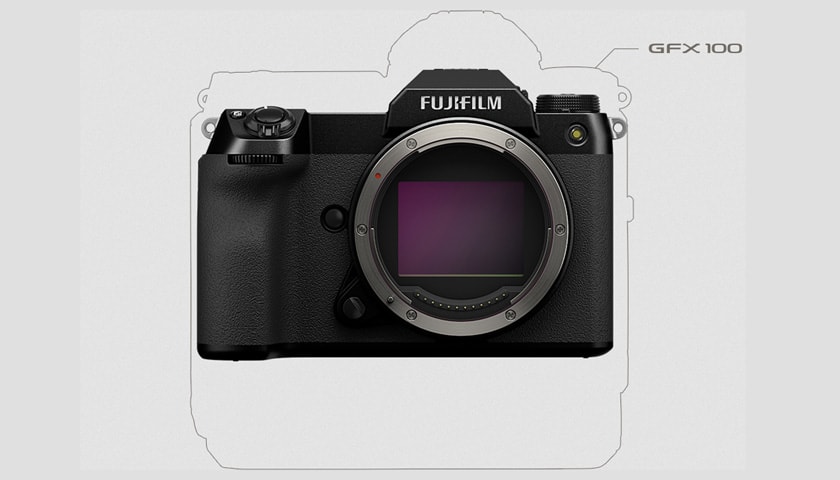
Thanks to the sensor and image stabilisation combination, the GFX 100S can capture 400MP high-res images using a pixel-shift mode that was only added to the GFX 100 via a firmware update.
Downsizing the body has also meant compromising on the battery. Instead of using the larger NP-T125 power packs of earlier GFX bodies. Fujifilm has opted to use the NP-W235 battery that debuted with the X-T4. with a Cipa rating of a reasonable 460 shots per charge.
For potential users who are keen to upgrade from their old systems to the GFX 100S, the addition of the traditional mode dial will be a welcome relief. There‘s a 1.8-inch display for showing shooting parameters, but that can be customised to display the virtual dials that were introduced in the GFX 100.
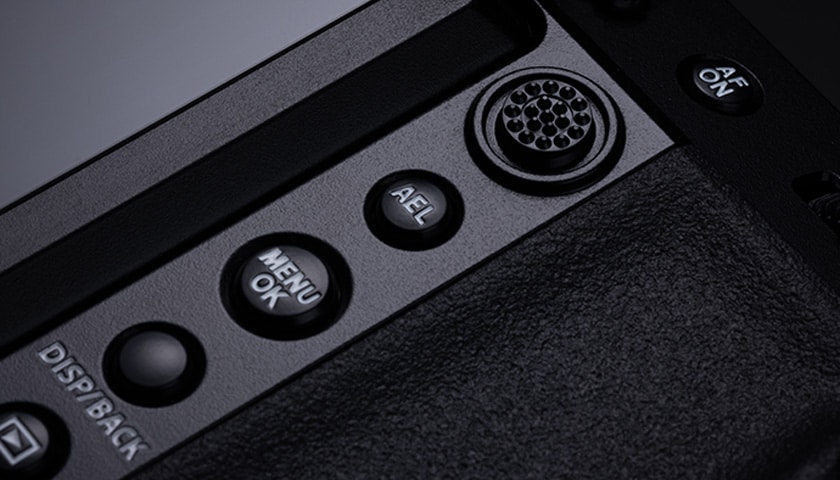
Instead of a four-way joystick controller on the rear, there‘s an eight-way textured nub that allows for diagonal movements. We‘re calling it a ‚nub‘ as it‘s not as tall as the joysticks on the previous GFX cameras, and its small size means you‘re not accidentally pressing it (which can reset AF-point selection or camera settings). However, it takes some getting used to.
To help keep the price down, the GFX 100S gets a fixed OLED electronic viewfinder that has a resolution of 3.69 million dots and a magnification of 0.77x (compared with the detachable 576 million-dot EVF of the GFX 100). The rear LED monitor is the same 3.2- inch tilting touchscreen on a triaxial mount, and this lets the monitor move up to 90 degrees upwards, 45 degrees downwards and 60 degrees to the side.
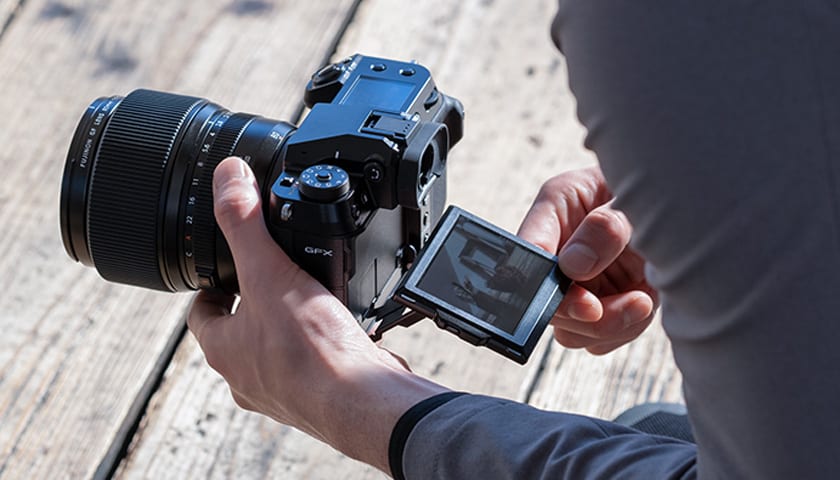
While the GFX 100S can capture 100 MP images at burst s of up to 5fps with continuous autofocus, it‘s also a capable movie camera. 4K/30P 10-bit 4:2:0 internal recording (with a bit rate of up to 400 Mbps) using the full width of the sensor is possible, along with the option of F-Log and HLG 10-bit 4:2:2 or 12-bit ProRes Raw to an external recorder – the same as its older sibling, and 16-bit raw video recording is also available via HDMI. Where the GFX 100S improves on the older camera is movie clip lengths – there‘s now a maximum recording time of 120 minutes instead of 60.
Although the GFX 100S inherits the same maximum shutter speed, shutter mechanism durability and sync speed as the GFX 100, Fujifilm claims the new mechanism reduces lag to 0.07 seconds from 0.09 seconds on the older camera.
The GFX 100S also gets an additional Film Simulation mode, taking the count to 19. Nostalgic Neg adds a slight amber tint to highlights, and saturates some colours, for a more retro look.
Fujifilm GFX 100S Build and handling
The new shutter unit and IBIS mechanism in the GFX 100S mean Fujifilm has been able to relocate the battery to the single handgrip on the body, allowing it to lose the vertical grip. This has resulted in a body that‘s shorter and slimmer than the other GFX models: one that can easily be mistaken for a full-frame camera.
At 900 g, the body is 500 g lighter than the GFX 100, and this makes it possible to use it easily outside of a studio, the usual haunt of a modern medium-format camera. That said, it‘s still heavier than a full-frame camera, and prolonged handheld use can become tiring – during our testing, we had to keep putting it down every 20 minutes or so to rest our aching fingers. The GF lenses aren‘t lightweights either (physically or in terms of optics), adding to the weight you‘ll need to lug around if you plan to use the camera for street photography.
Despite that, the GFX 100S sits comfortably in the hand thanks to a textured rubber grip that provides excellent traction, although the middle finger indent may be too small for users with large hands.
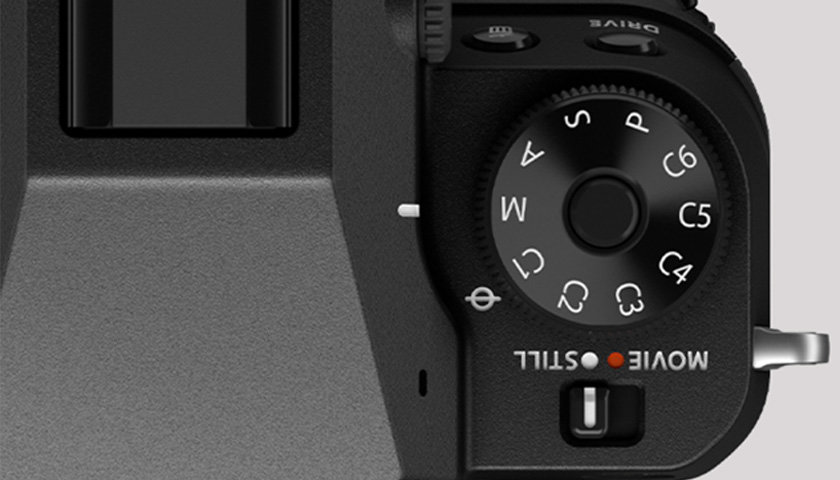
The control layout will be familiar to most photographers, with a traditional PASM mode dial on the left of the top plate, the usual twin control dials on the front and back on the right side of the body, and most buttons within easy reach of your thumb or forefinger. Even though it doesn‘t inherit the usual ISO and shutter speed dials you‘ll find on most Fujifilm cameras, there‘s still a distinct Fuji ergonomic here.
That said, the placement of the Q button (to access the Quick Menu) could be concerning for some. As on the Fujifilm X-T30, the Q button is on the ridge of the thumb rest, which can lead to accidental presses, although we didn‘t have any issues during our testing, as the ridge is high enough to keep the digit away from the button.
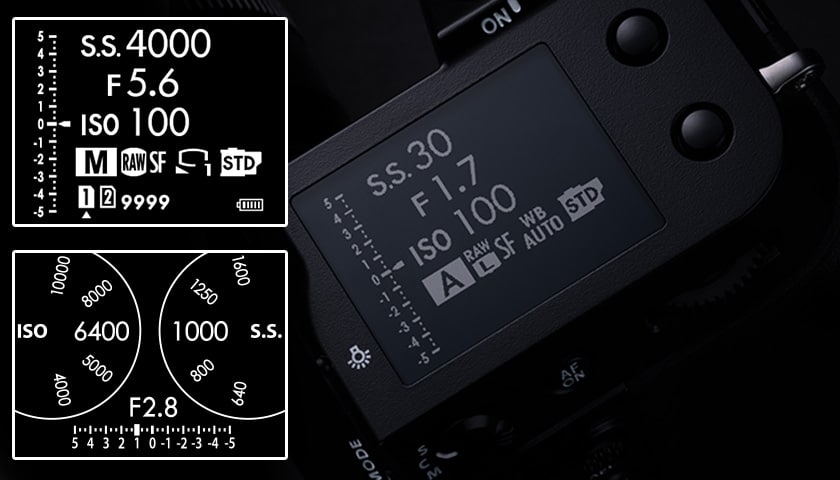
As we mentioned earlier, the top display can be customised to show shooting parameters, the virtual dials for shutter speed and ISO, or a histogram. It can also be set to display any information in black on white instead of the usual white on black, in case that‘s easier for you to view. Pressing a small button on the side of the EVF (indicated by a lamp icon) illuminates the panel.
Similarly, you can customise the Q menu to be displayed on a grey background or overlaid on the Live View frame. Physical buttons can also be customised depending on your needs – practically anything can be programmed, from drive modes and metering to exposure settings – and the interface will be familiar to anyone who‘s used any recent Fujifilm camera.
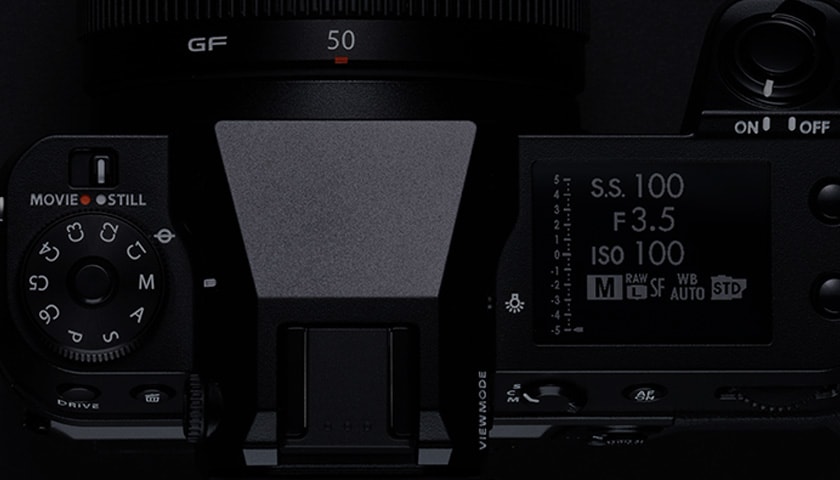
Even though the EVF has a lower resolution than the one on the GFX 100, it‘s sharp as a tack. If you‘re not happy, though, the camera‘s ‚boost‘ modes let you increase the resolution or the refresh rate, at the expense of battery life.
Interestingly, Fujifilm has opted to stick with the dual SD card slots in the GFX 100S instead of usingfaster storage like XQD or CFexpress, as other camera makers have done. That said, both slots are compatible with UHS-II cards, and that ‚s plenty for both continuous shooting and 4K video recording.
Performance
The biggest selling point for the GFX 100S, apart from its huge resolution, is its relatively small size and image stabilisation. This means, in theory, that you can shoot with long shutter speeds hand held; however, while we were able to go as low as 1/8 sec, the results weren‘t as sharp as we were expecting. The claim of up to six stops of shutter speed advantage is calculated for the sensor‘s pitch and yaw movements and is, essentially, a best-case figure. During our time with the camera we got more like 4-4.5 stops of compensation in practice. which is still pretty good, considering that the results will largely depend on your personal ability to hold the camera steady.
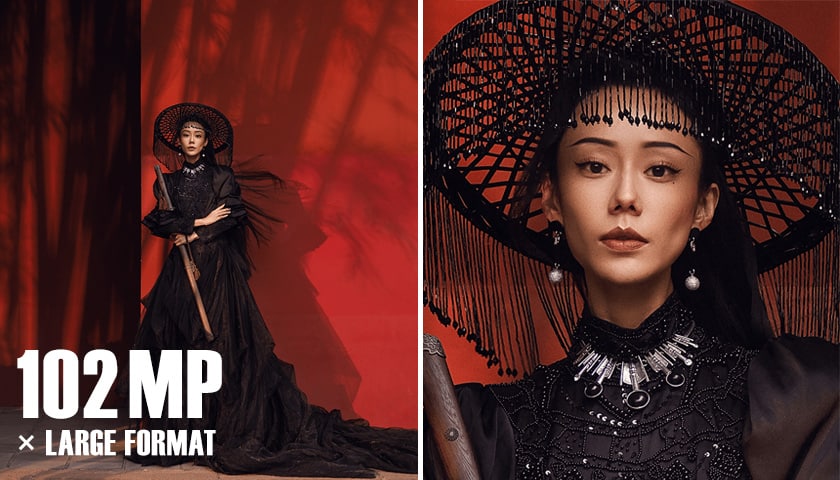
As with the GFX 100, you can take full advantage of that whopping 102MP of resolution on tap. The biggest advantage of this kind of resolution is the ability it gives you to crop an image without losing quality. While the sample images shown here are straight-out-of-the-camera JPEGs, a few have been cropped significantly. Needless to say, we were very happy with the results.
The camera‘s dynamic range is nothing short of incredible – not once did we need to set bracketing parameters to ensure we captured the full brightness range of a scene. Add to that the tonality and colour you get from Fujifilm‘s Film Simulations, and this camera is perfect for landscapes, portraits and still-life.
Most medium-format cameras have slightly clunky autofocus, but we found the GFX 100S to perform quite admirably. While it‘s not as snappy as what you‘ll experience with Canon‘s latest full-frame mirrorless cameras, or a Sony alternative, it‘s still pretty good when paired with the GF 32-64 mm f/4 lens. It does struggle when there are several faces to focus on. but it‘s quite quick when there‘s just the one subject. However, AF speed will depend on the lens you‘re using: while the GF 50 mm prime we had was also quite quick, it‘s likely that the GF 120 mm f/4 might slow things down a bit.
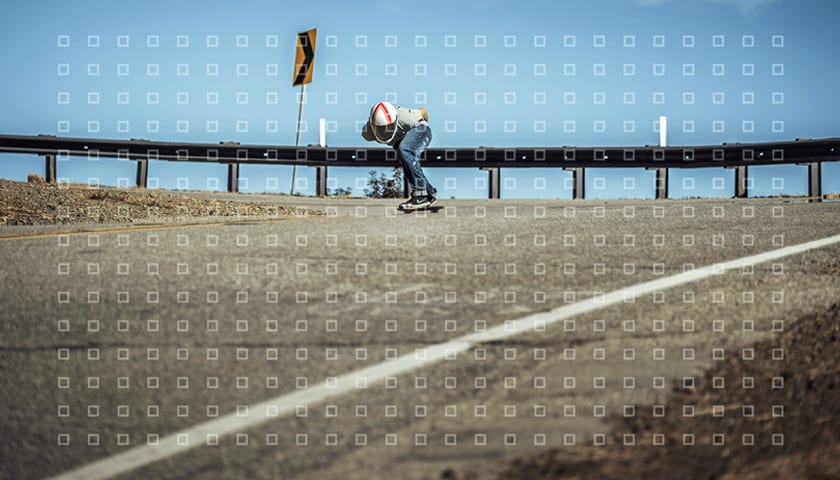
Eye tracking wasn‘t as great, although if you can focus accurately on a face, chances are the high resolution will have captured plenty of detail that you can fall back on. If you‘re considering this camera for sports or wildlife, however, its continuous AF performance may not be up to scratch. The GFX 100S won‘t be able to handle anything fastmoving, but slow-moving subjects will be tracked admirably.
VERDICT
Having tested the camera for a few days, it‘s easy enough to see why someone would want to opt for the GFX 100S over its predecessor. Not only is it smaller and lighter than any other 100MP medium-format camera, it‘s also far cheaper – and that makes it a lot more accessible. It is still expensive for many photographers (even professionals), but this proves that medium-format can become more mainstream. The GFX 100S isn‘t perfect – its AF performance may not suit every shooting scenario, and its image stabilisation doesn‘t quite match what it says on the tin – but all that gets trumped by the image quality. This camera is worth the investment for anyone who‘s after a versatile medium-format body.

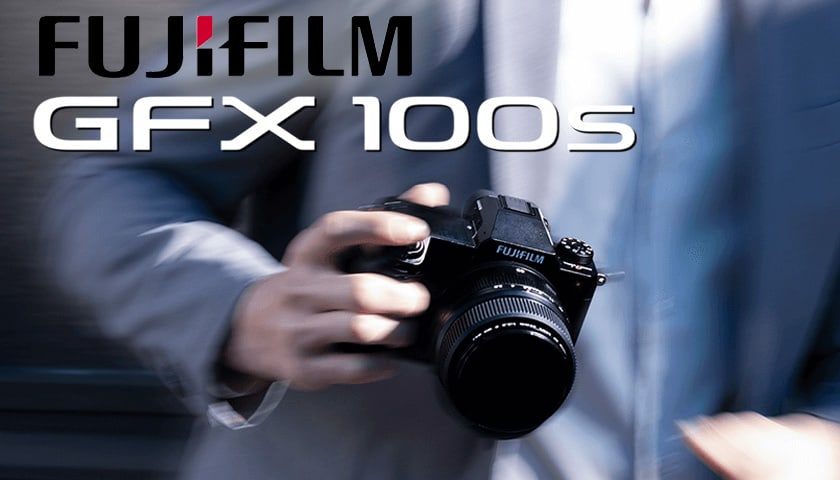
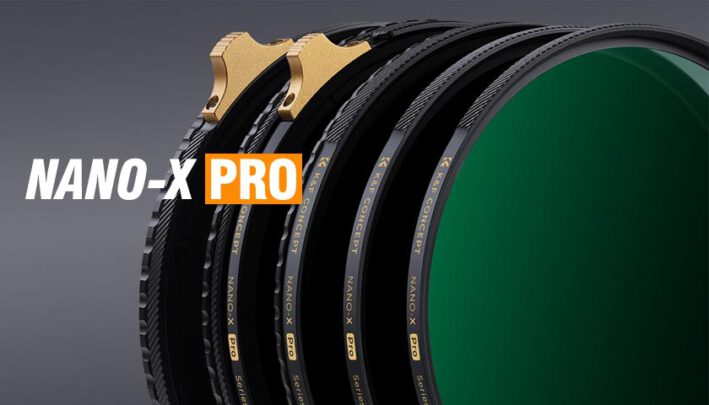
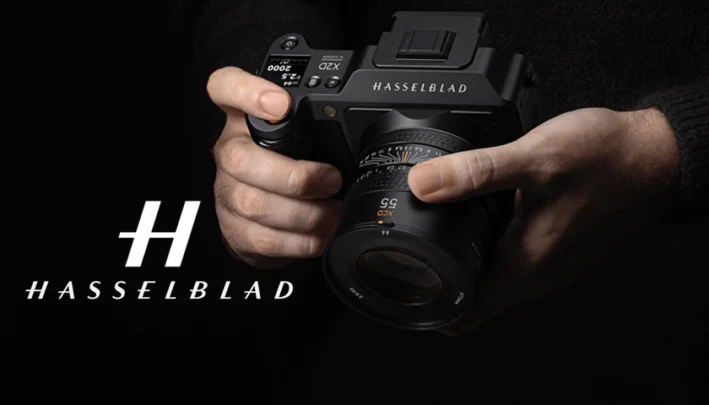
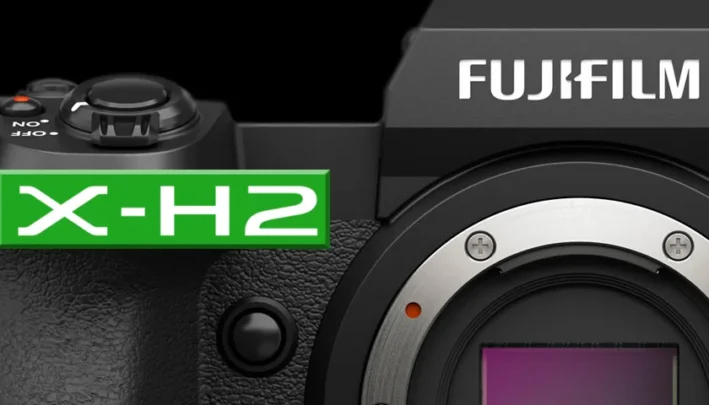
[…] camera. Instead, it employs the same 51.4MP sensor, but places it into the same body as the superb GFX 100S that the firm released earlier this year. It offers essentially the same imaging specifications as […]